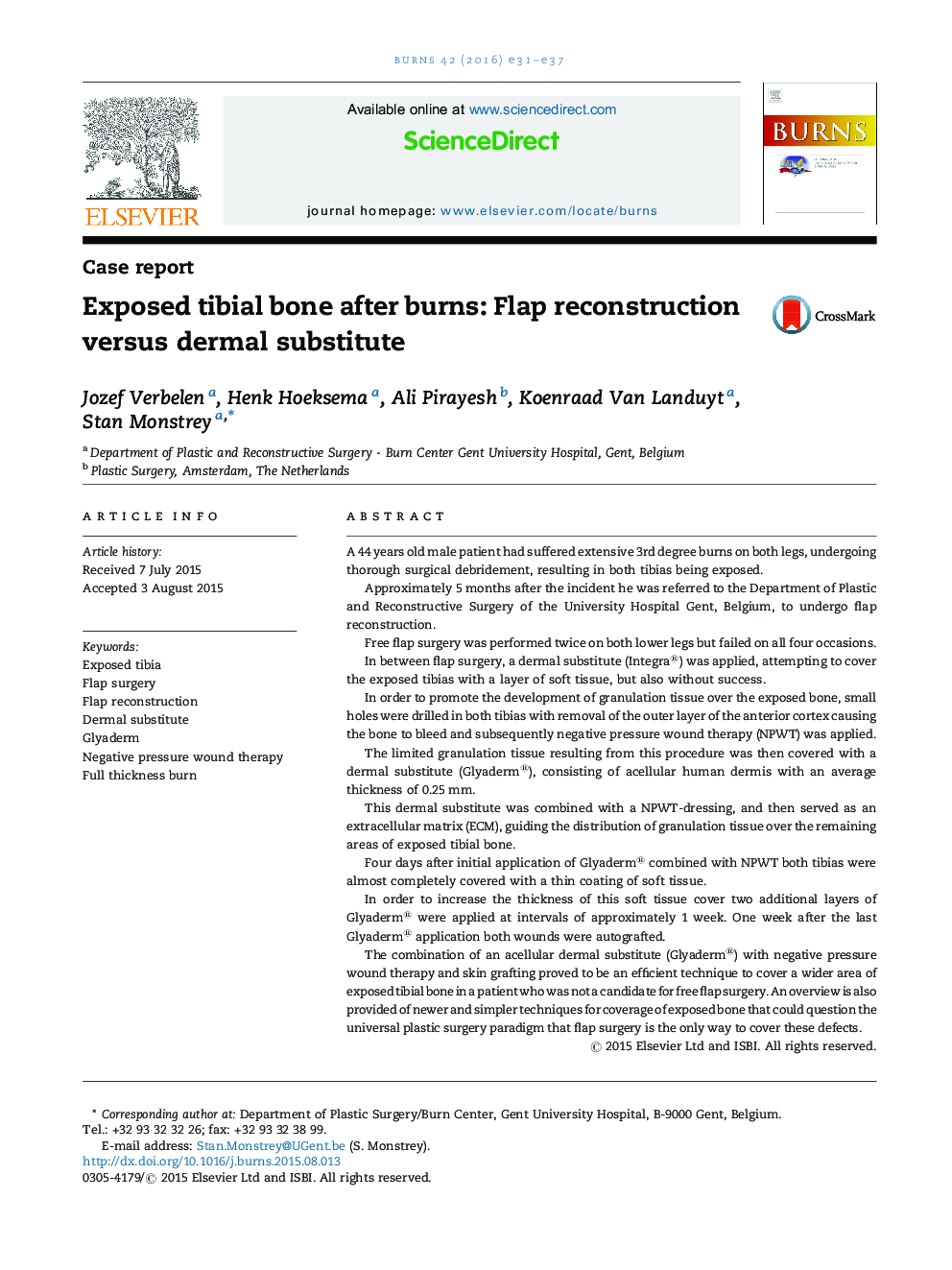| کد مقاله | کد نشریه | سال انتشار | مقاله انگلیسی | نسخه تمام متن |
|---|---|---|---|---|
| 3104062 | 1191639 | 2016 | 7 صفحه PDF | دانلود رایگان |
• Delayed soft tissue cover for exposed tibial bone after burns is a challenge.
• Plastic surgeons consider flap surgery as the best way to cover these defects.
• Alternative solutions are negative pressure wound therapy and/or dermal substitutes.
• Glyaderm® is suitable to guide granulation tissue over areas of exposed bone.
• With Glyaderm® long term soft tissue coverage of exposed tibial bone can be obtained.
A 44 years old male patient had suffered extensive 3rd degree burns on both legs, undergoing thorough surgical debridement, resulting in both tibias being exposed.Approximately 5 months after the incident he was referred to the Department of Plastic and Reconstructive Surgery of the University Hospital Gent, Belgium, to undergo flap reconstruction.Free flap surgery was performed twice on both lower legs but failed on all four occasions.In between flap surgery, a dermal substitute (Integra®) was applied, attempting to cover the exposed tibias with a layer of soft tissue, but also without success.In order to promote the development of granulation tissue over the exposed bone, small holes were drilled in both tibias with removal of the outer layer of the anterior cortex causing the bone to bleed and subsequently negative pressure wound therapy (NPWT) was applied.The limited granulation tissue resulting from this procedure was then covered with a dermal substitute (Glyaderm®), consisting of acellular human dermis with an average thickness of 0.25 mm.This dermal substitute was combined with a NPWT-dressing, and then served as an extracellular matrix (ECM), guiding the distribution of granulation tissue over the remaining areas of exposed tibial bone.Four days after initial application of Glyaderm® combined with NPWT both tibias were almost completely covered with a thin coating of soft tissue.In order to increase the thickness of this soft tissue cover two additional layers of Glyaderm® were applied at intervals of approximately 1 week. One week after the last Glyaderm® application both wounds were autografted.The combination of an acellular dermal substitute (Glyaderm®) with negative pressure wound therapy and skin grafting proved to be an efficient technique to cover a wider area of exposed tibial bone in a patient who was not a candidate for free flap surgery. An overview is also provided of newer and simpler techniques for coverage of exposed bone that could question the universal plastic surgery paradigm that flap surgery is the only way to cover these defects.
Journal: Burns - Volume 42, Issue 2, March 2016, Pages e31–e37
